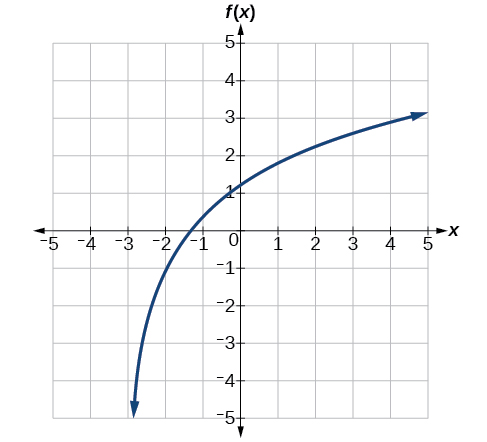| << Chapter < Page | Chapter >> Page > |
| Translations of the Parent Function | |
|---|---|
| Translation | Form |
Shift
|
|
Stretch and Compress
|
|
| Reflect about the x -axis | |
| Reflect about the y -axis | |
| General equation for all translations |
All translations of the parent logarithmic function, have the form
where the parent function, is
For the graph of the parent function is reflected about the y -axis.
What is the vertical asymptote of
The vertical asymptote is at
Find a possible equation for the common logarithmic function graphed in [link] .

This graph has a vertical asymptote at and has been vertically reflected. We do not know yet the vertical shift or the vertical stretch. We know so far that the equation will have form:
It appears the graph passes through the points and Substituting
Next, substituting in ,
This gives us the equation
Give the equation of the natural logarithm graphed in [link] .

Is it possible to tell the domain and range and describe the end behavior of a function just by looking at the graph?
Yes, if we know the function is a general logarithmic function. For example, look at the graph in [link] . The graph approaches (or thereabouts) more and more closely, so is, or is very close to, the vertical asymptote. It approaches from the right, so the domain is all points to the right, The range, as with all general logarithmic functions, is all real numbers. And we can see the end behavior because the graph goes down as it goes left and up as it goes right. The end behavior is that as and as
Access these online resources for additional instruction and practice with graphing logarithms.
| General Form for the Translation of the Parent Logarithmic Function |

Notification Switch
Would you like to follow the 'Algebra and trigonometry' conversation and receive update notifications?